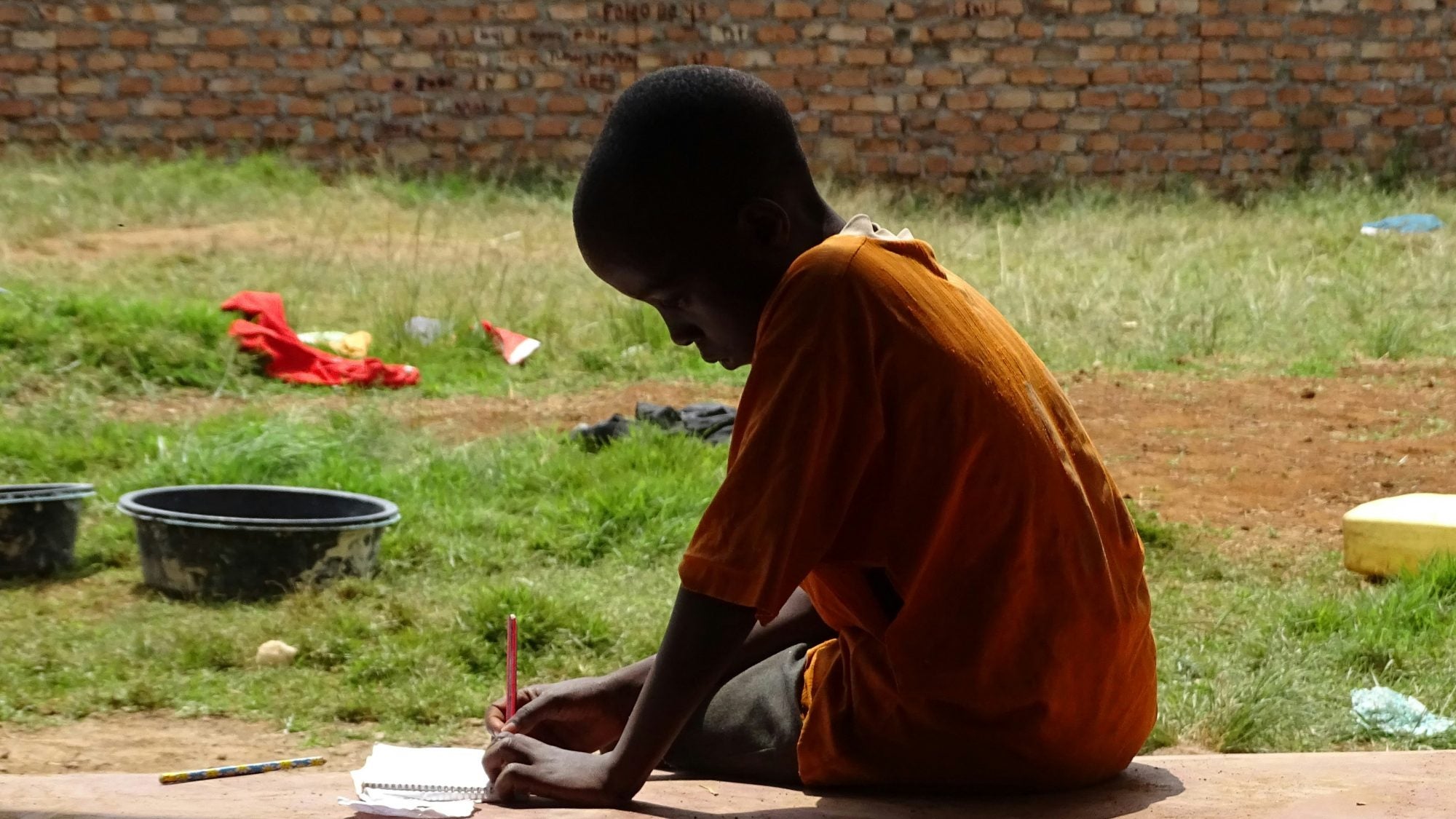
Title: Teaching Mother Tongues: Dividends and Complexities in Kenya
This article advances the idea that teaching children their mother tongues and learning adjacent national languages offers better prospects for consolidating nation-building and contributing to cultural preservation. Kenya’s case illustrates a template for multiethnic societies seeking local and regional belonging. However, adequate implementation resources, including staff and materials, must undergird enabling policies.
Introduction
Nations develop language policies to promote national identity and unity. Through the development of national centralized curricula, education policy aims to foster civic responsibility and mobilize citizens to support their cultures. These efforts are often embedded in educational reforms and exhortations from political leaders.
Globally, humanistic education is designed to foster respect for individual cultural differences and to support marginalized communities. Language is the vehicle for shaping cohesive societies and serves as the guidance system for transmitting values from one generation to the next. Thus, clarity in language planning is essential for multilingual communities.
Adoption of Mother Tongues and Confronting Colonial Languages
Gaining independence in 1963, Kenya sought to overcome the colonially-engineered ethnic divisions that encouraged mobilization along ethnic lines. Accordingly, missionary schools established by colonial powers were encouraged to teach indigenous languages at the elementary school level. To assert its sovereignty, Kenya’s political leadership sought to build an education system that reflected its socio-political and economic needs for greater equity and justice. As an emerging developing nation, education policy aimed to combat illiteracy and forge the country’s sense of nationhood through a uniform language policy. Initially, policy privileged the use of English in an official capacity but permitted indigenous “mother tongues” to be used in different regions. In 1974, Kiswahili was added to the national languages ostensibly to promote African languages.
Confronted with poverty and class-driven inequality, the newly independent Kenya still had to come to terms with the fact that a majority of rural populations preferred to speak their mother tongues. Arguably, pressures from progressive reformers caused a rethinking in national elite attitudes towards the preservation of indigenous languages. In response, the government followed UNESCO’s caution that Indigenous languages be recognized and valued to prevent the loss of human identities.
Therefore, education policy documents encouraged the recognition of African languages in educational instructions to build on that sense of collective consciousness and psychological needs. That objective is manifest in constitutionalism. Article 7, chapter 2 of the Kenyan Constitution, most recently updated in 2010, recognizes Kiswahili as the national language, while official documents utilize both Kiswahili and English. The same constitution, through instruments in the Bill of Rights, protects indigenous languages as a matter of necessity.
Additionally, one of the requirements for granting Kenyan citizenship is that the applicant must be able to speak at least one local language. The goal here is to advance communication and social harmony within Kenya. The government also recognizes that young children should be encouraged to speak their mother tongues for psychological nourishment and cultural preservation. Scholars support the argument that young children’s creative thoughts and imaginations are first nurtured in their Indigenous mother tongues. The use of mother tongues should also be encouraged in tandem with introducing children to the world, where English is a key avenue for international communication. Accordingly, teaching English in schools receives the lion’s share of state resources. That said, for African liberation, Kenya and Tanzania are leaders in nationalizing the Kiswahili language, strengthening its prominence in the pan-African movement.
Core Policy Problems
Kenyan policymakers at the Ministry of Education support the preservation of African cultures but face the tension of balancing the benefits of teaching local languages while strengthening existing policies that require schools to teach Kiswahili and English. Importantly, policy officials face organizational and resource challenges in articulating effective ways to strengthen Indigenous languages.
Furthermore, there is debate over adopting books and materials to teach Kiswahili and English. In the formative debates that led to the country’s seminal policy blueprint initiative, the Ominde Commission Report of 1964, Kenyan nationalists established that English, as with any other colonial language, reinforces colonial hegemonic cultures. This appears consistent with scientific research. American anthropologist and linguist Jane Hill, for example, demonstrated that the dominant status of colonial language reinforces the mental subjugation of students who primarily communicate in their vulnerable mother tongues. Meanwhile, teaching in mother tongues helps learners respect their cultural heritage and encourages free expression, especially since children need to build on their self-esteem and confidence while transitioning to learning other languages at higher grades. In many schools, however, perhaps to slight indigeneity, peers often mock other children for speaking English with native accents. Additionally, some schools continue to treat students with limited English fluency as academically challenged.
With increased resource allocation to language development, the state bureaucracy, primarily through the Ministries of Education and the Office of the President, allowed subsequent efforts to protect nationalistic agendas while fostering a sense of cultural preservation. Such language policies are, therefore, an integral part of institution-building, designed to promote national development and cohesion.
As such, the heavy policy emphasis on Kiswahili and English in education comes at the expense of teaching Indigenous languages at the same level of intensity, which can undervalue the cultural significance of mother tongues.
Policies for Inclusivity
Multi-ethnic nations should find ways of growing together by consolidating a common unifying language or languages and providing space for ethnic languages to preserve their cultural heritage. In Kenya, indigenous languages form the building blocks for cementing national consciousness, and Kenyan nationalism should focus on cultural integration and cultivating a shared collective consciousness.
From a pragmatic standpoint, it is possible to strengthen national languages without undermining Indigenous languages. Scholars like the late Ngugi wa Thiong’o have set the tone by publishing literary masterpieces in both indigenous and English languages. There is no evidence to suggest that wa Thiong’o’s work in his native language undermines learning of any of the primary official languages.
Although teaching local languages is desirable, indigenizing the national curriculum is challenging and resource-demanding. Policymakers must provide resources and revamp universities to translate classical works into these languages. Kenya has done well in translating the Holy Bible into many ethnic languages and can do the same for core books in the humanities. Kenyan-born American political writer, Ali Mazrui, identified staff preparation as one of the major barriers to the Africanization of curricula. Contextually, Africanization has meant including indigenous knowledge, cultures, histories, and perspectives of local populations in curricula. Therefore, significant investments in books, digital resources, and staff to oversee the process would be necessary to develop sustainable Indigenous curricula.
One policy consideration would be vigorously indigenizing the curriculum. The government of Kenya already offers Indigenous languages from primary school to grade four. As the nation adopts a competence-based curriculum, it must provide resources to expand Indigenous languages as pathways in the social sciences. More importantly, the indigenized curriculum must not be an exercise in excluding universalistic traditions, but rather an adjustment to the academic philosophies of all human intellectual heritages. In other words, including indigenous practices must not negate universal principles of science and human rights.
Another policy recommendation is to consider curricular design in subjects like drama and theatre, which now leverage new technologies. Currently, the internet has made it possible to archive culturally enriching materials that also capture language use and traditional African lifestyles, especially in popular media and press. One successful example is the TV drama (e.g., Vitimbi and Churchill Show), as well as many Sitcoms that proudly include different accents of Kiswahili, showcasing that multiple ethnicities can mesh into an identifiable Kenyan art form. Luo-speaking Kenyans initially popularized the Benga music genre, gaining nationwide appeal and manifesting a similar observation phenomenon. Since cultural diffusion is entirely possible, policy should be directed toward developing Indigenous languages to reduce the burden of using English and Kiswahili as the artistic mediums for preserving African cultures.
For more inclusive citizenship, Kenyans need to learn indigenous languages beyond their mother tongues. Doing so enriches the organization of the public sphere and deepens pluralism. Wouldn’t it be advantageous, for example, for a Somali child living in Kenya to learn the Kikuyu language or vice versa? This model emulates the current practice in some European nations, which have developed a self-confident identity without losing their original mother tongues. The European Union (EU) has famously promoted the use of 24 languages to preserve its cultural heritage. That policy framework encourages schools to develop multilingual classrooms across the union, allowing children to speak multiple languages. The EU’s language policy requires every citizen to master at least two additional languages in addition to their mother tongue. For the EU, languages are a key aspect of cultural preservation and a fundamental value that must be respected. Kenya can benefit from the EU model in at least three ways. First, governance will be streamlined, especially in rural areas where the strength of national languages is weaker. Second, pan-African markets may benefit from greater outreach enabled by multiple avenues of language communication. And third, multilingualism promotes greater cultural understanding.
In conclusion, teaching Indigenous languages should be a part of broadening Kenya’s nationalism rather than for the sole purpose of cultural preservation. And there is no danger that if mother tongues are taught concurrently with the official languages, there will be deficits in efforts to preserve indigenous cultures and accommodate the emerging vision of Pan-Africanism. Policy reforms must, therefore, revamp efforts to indigenize the curriculum in primary and secondary schools. Additionally, boosting language teaching typically requires a greater investment. Lastly, students should learn their mother tongues and an extra Kenyan language beyond their immediate communities. Such efforts collectively foster national identity and erode the power dynamics that come with the continued dominance of colonial languages.
. . .
Dr. Eric E. Otenyo is a professor of public administration and politics at Northern Arizona University. He previously taught at the University of Nairobi and Illinois State University. He has published numerous works on comparative public administration and governance. He is an associate editor of the “Frontiers in Political Science” and a member of the editorial board of the “International Journal of Services, Economics and Management.” The views represented in this paper are his own and not those of any of his institutional affiliations.
Image Credit: Stijn Kleerebezem, Unsplash Content License, via Unsplash.
Recommended Articles

Amid stalled U.S. federal climate engagement and intensifying transatlantic climate risks, subnational diplomacy has emerged as a resilient avenue for cooperation. This article proposes a Transatlantic Subnational Resilience Framework (TSRF)…

The 1997 hijab ban in Türkiye left lasting effects on Muslim women’s psychological, social, and religious identities, shaping their experiences across academia, bureaucracy, and politics. Evidence from interviews…

Despite the non-political positioning of its organizing body, the European Broadcasting Union, the Eurovision Song Contest plays an important role in shaping how the public imagines and understands ideas of…